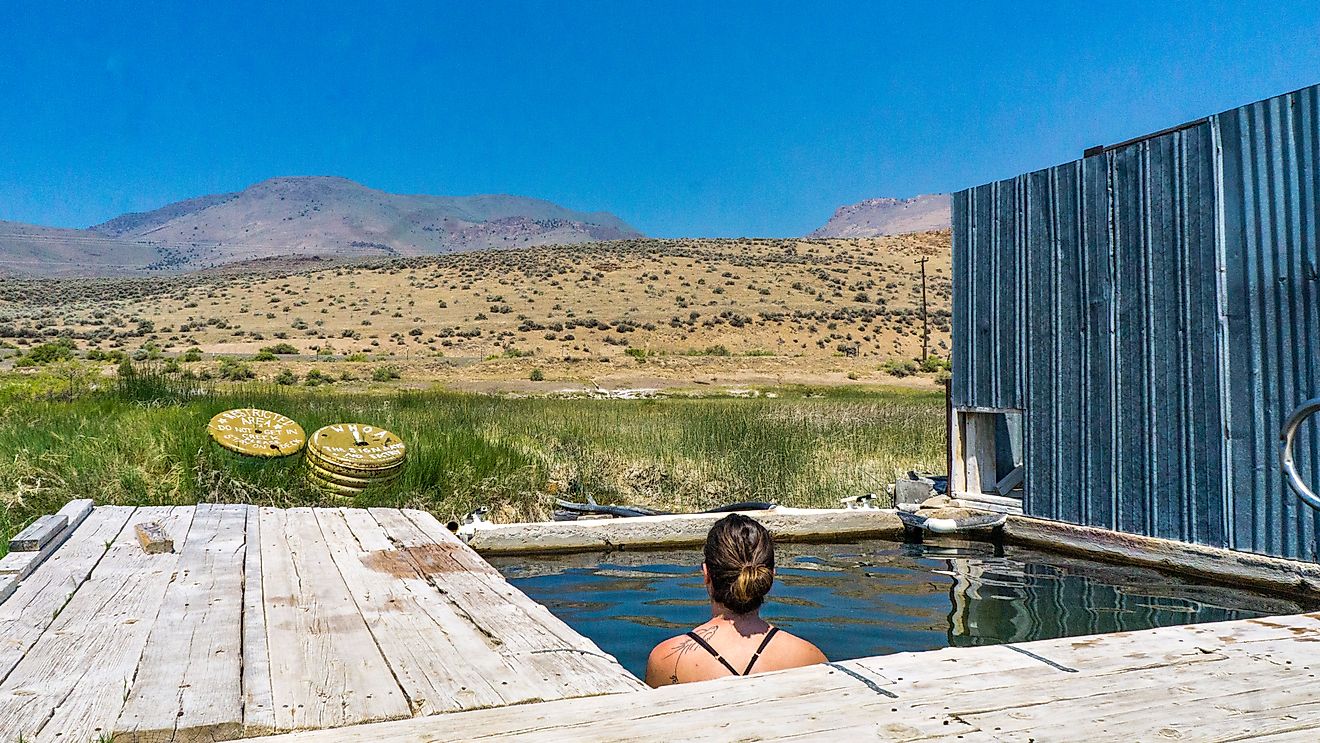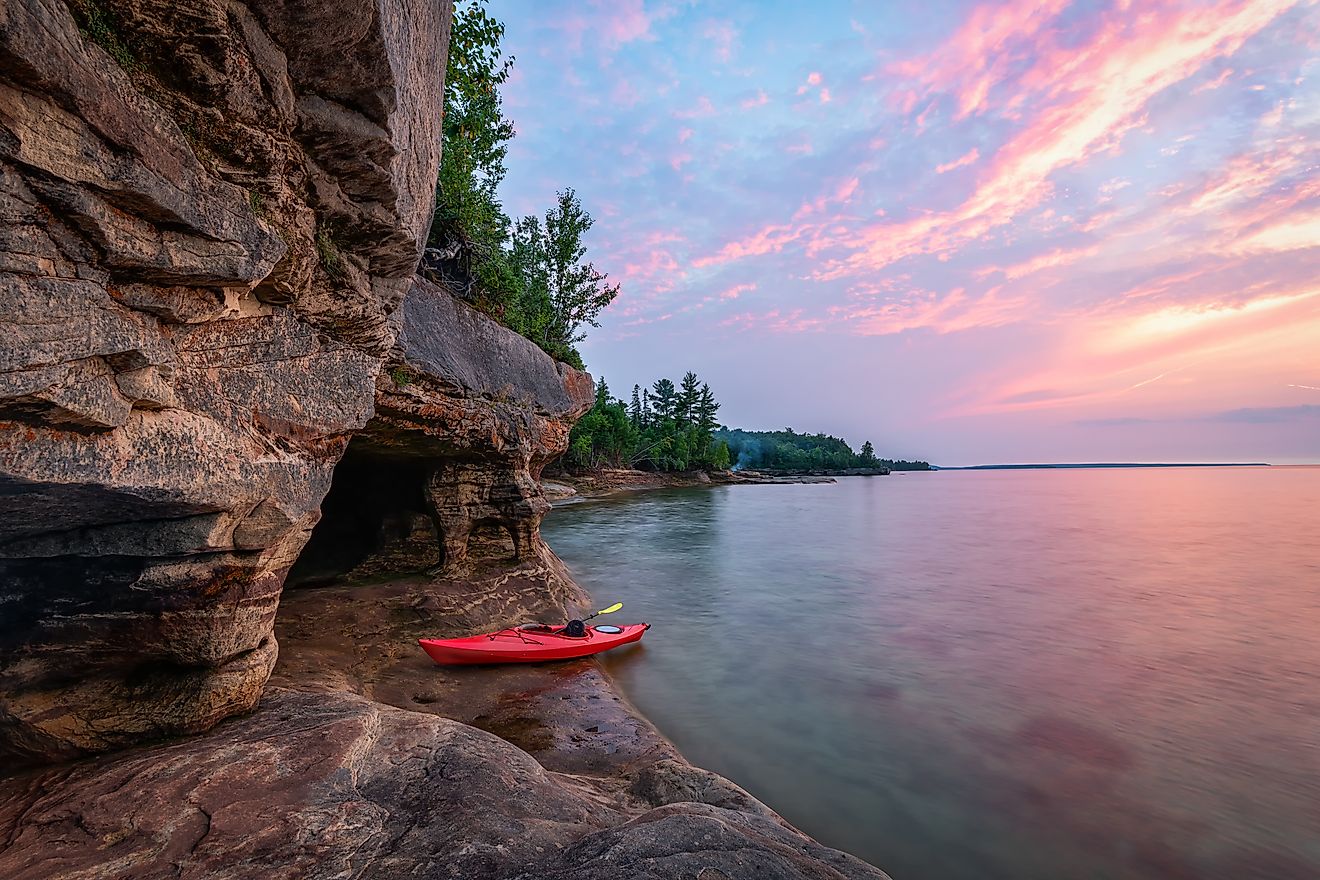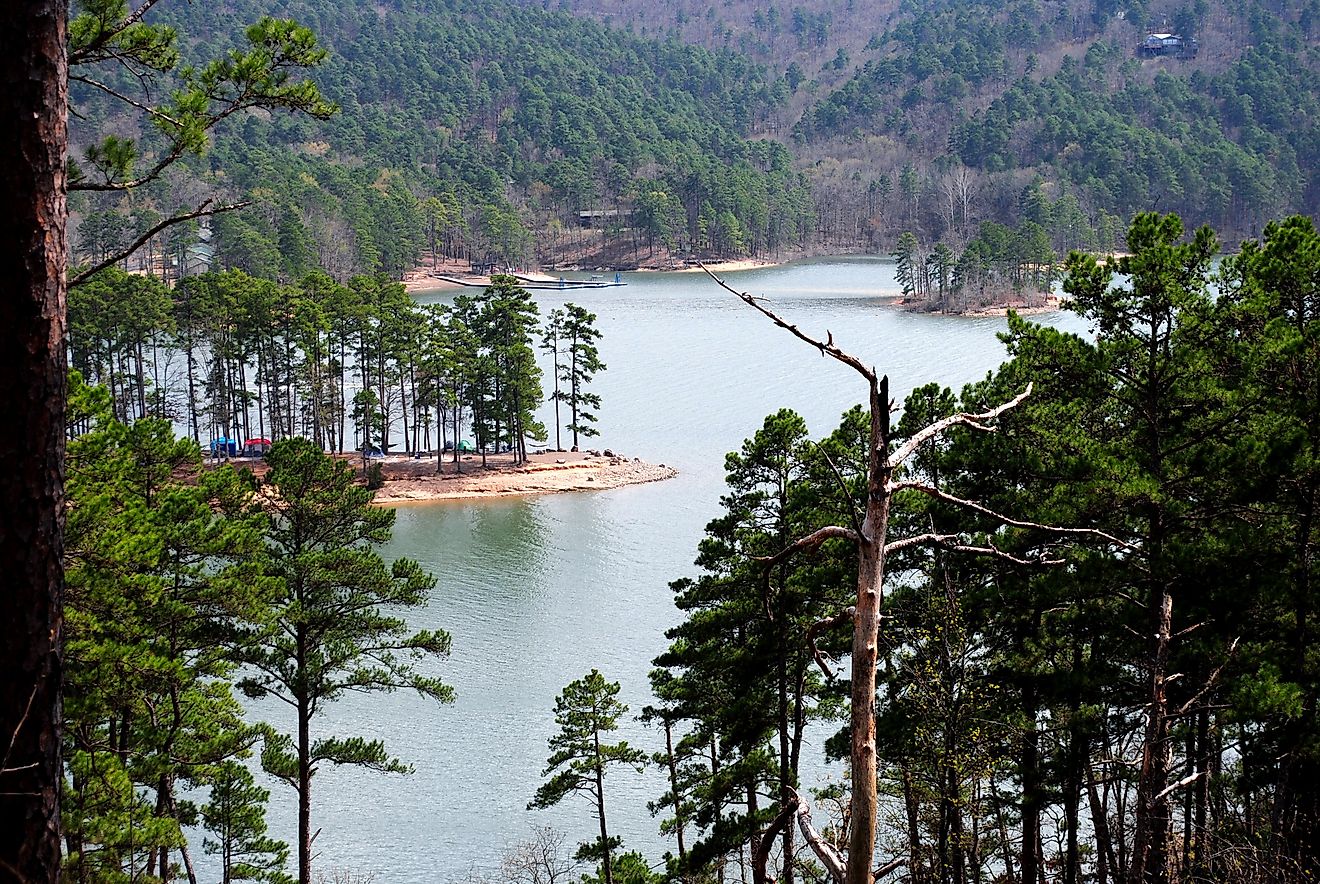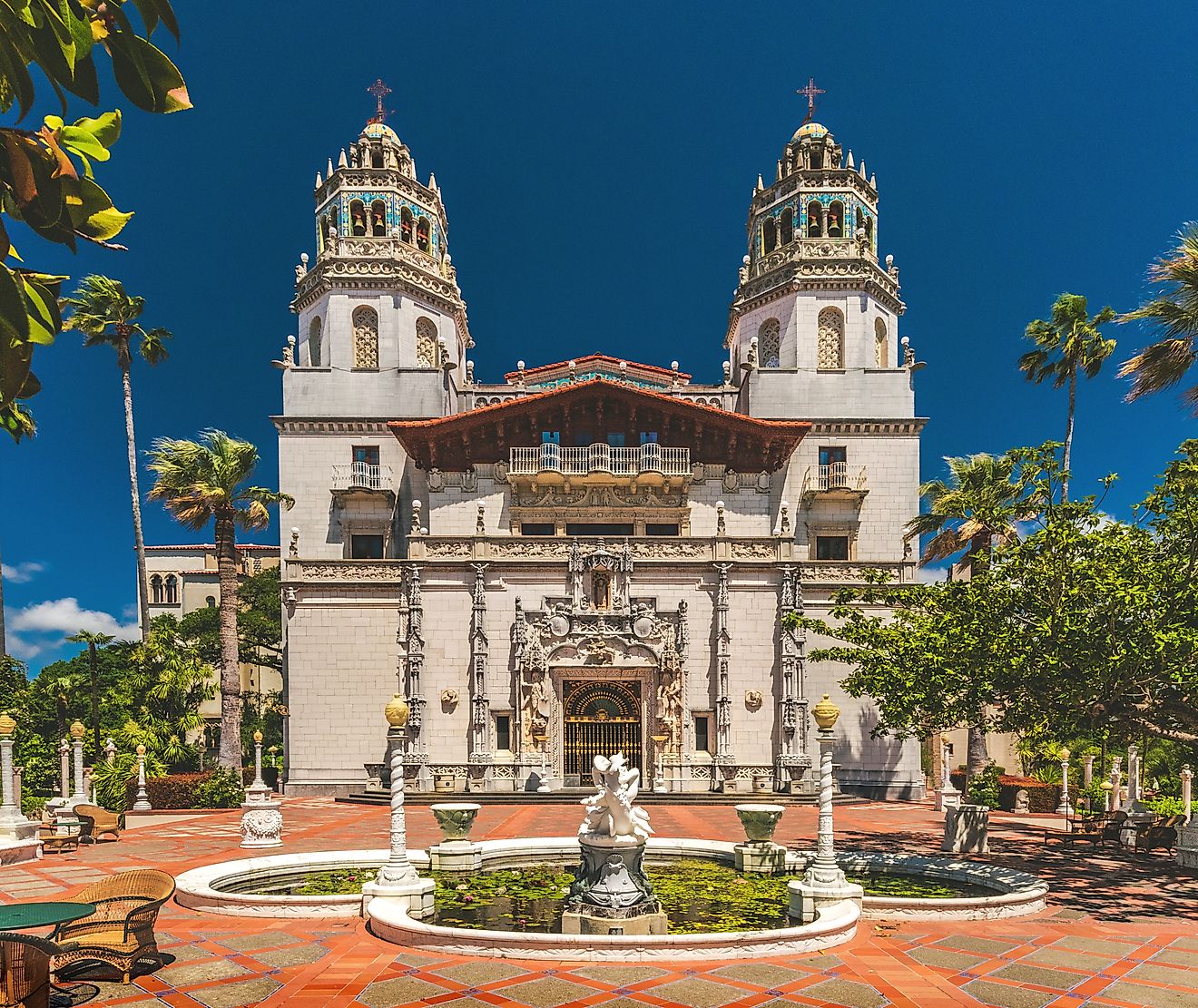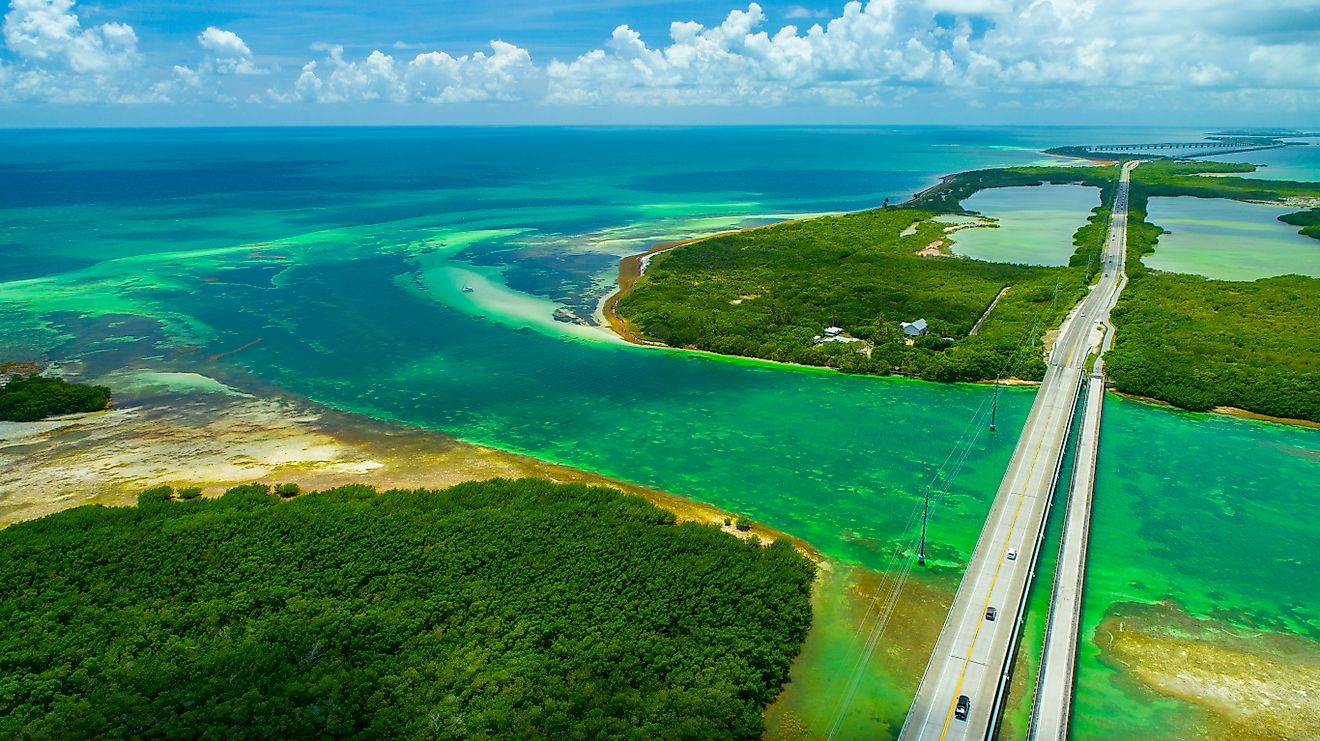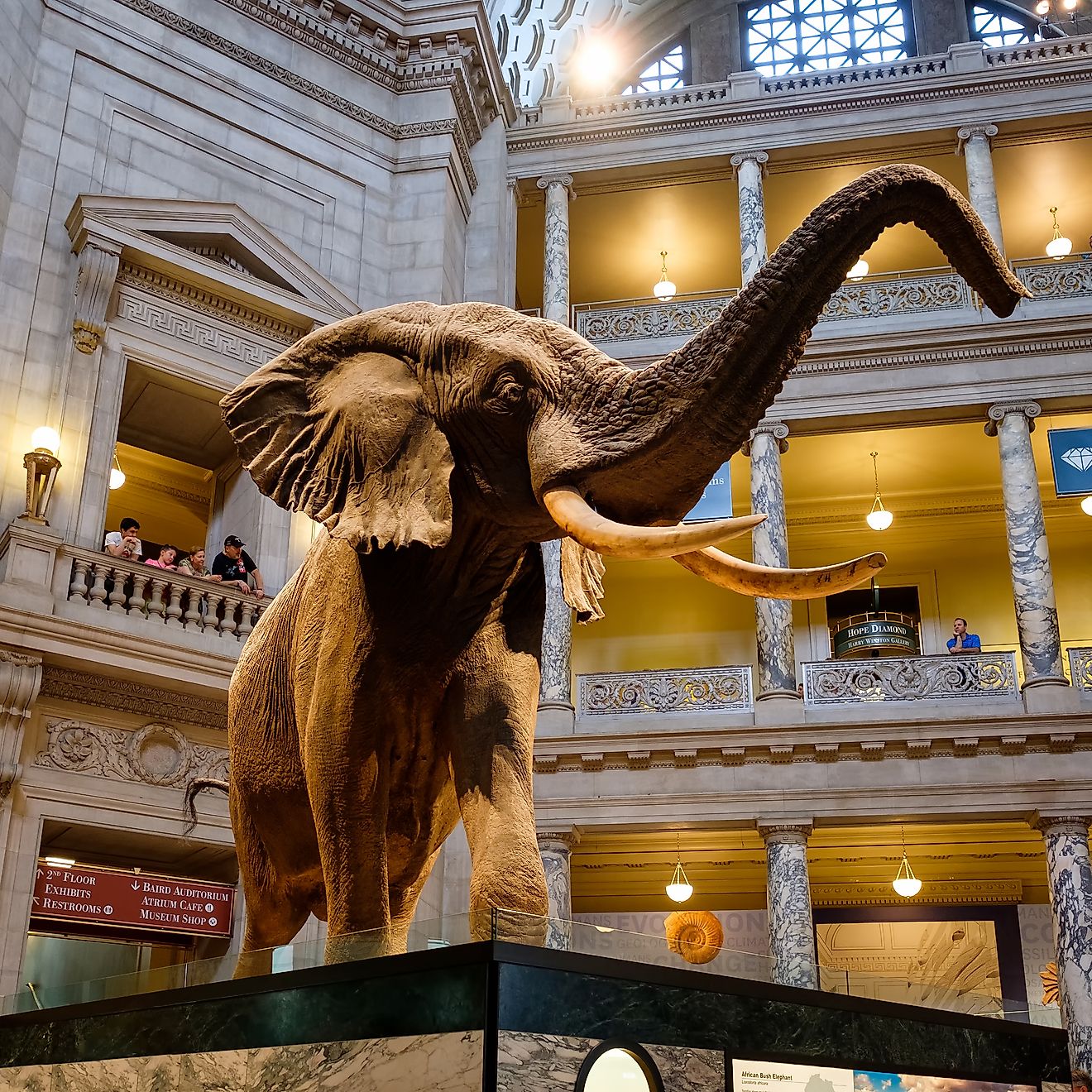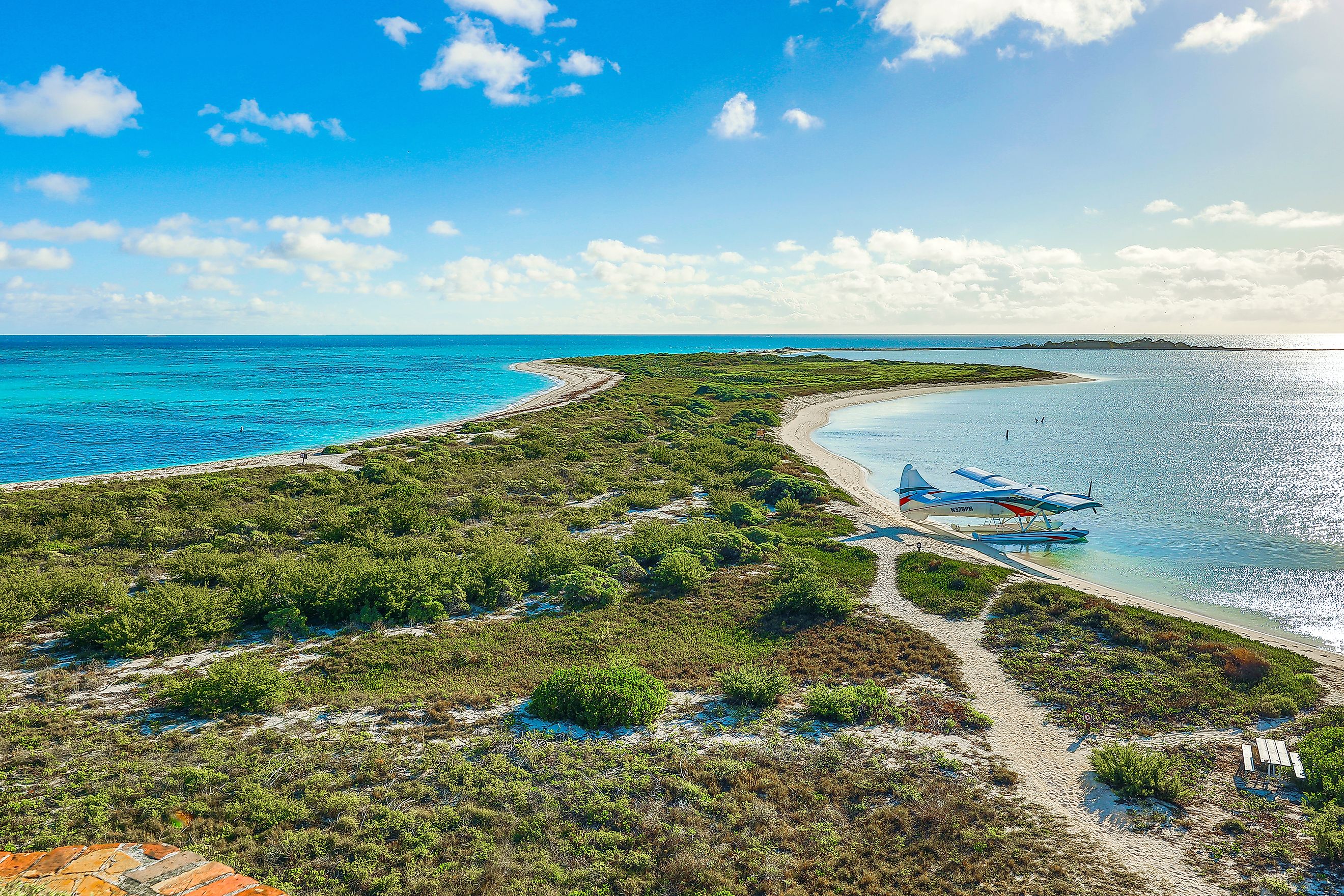
Stunning US Islands You Can Only Reach by Boat or Plane
Some of the most breathtaking destinations in the United States can’t be reached by car. These secluded islands, untouched by highways and mass tourism, offer an escape into pristine nature, rich history, and unique cultures.
Whether you crave the rugged beauty of the Pacific Northwest, the sun-drenched beaches of the South, or the remote wilderness of Alaska, these six stunning islands—accessible only by boat or plane—promise unforgettable adventures.
Dry Tortugas, Florida
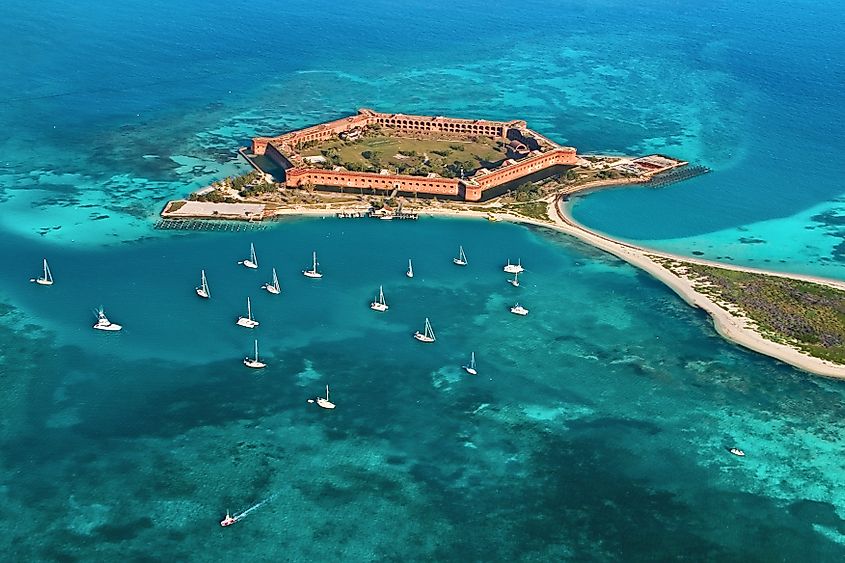
Seventy miles west of Key West, the Dry Tortugas rise from the turquoise waters of the Gulf of America, offering an unparalleled mix of history and marine beauty. Accessible only by seaplane or ferry, this remote national park is home to Fort Jefferson, a massive 19th-century coastal fortress built to protect American shipping lanes.
Snorkeling here is world-class, with crystal-clear waters revealing vibrant coral reefs teeming with sea turtles, reef sharks, and tropical fish. The waters around the Dry Tortugas are part of a designated marine sanctuary, ensuring that its coral formations and aquatic life remain pristine. The park also attracts birdwatchers, as it serves as a critical stopping point for migratory birds traveling between North and South America.
For those seeking a true escape, camping overnight on the Dry Tortugas provides an unforgettable experience—watching the sun set over the Gulf with nothing but the sound of waves and seabirds. Visitors must bring all their own supplies, as there are no services on the island, making it a true off-the-grid adventure. The remoteness of the Dry Tortugas adds to its mystique, offering travelers a rare glimpse into the untamed beauty of Florida’s coastal wilderness.
Isle Royale, Michigan
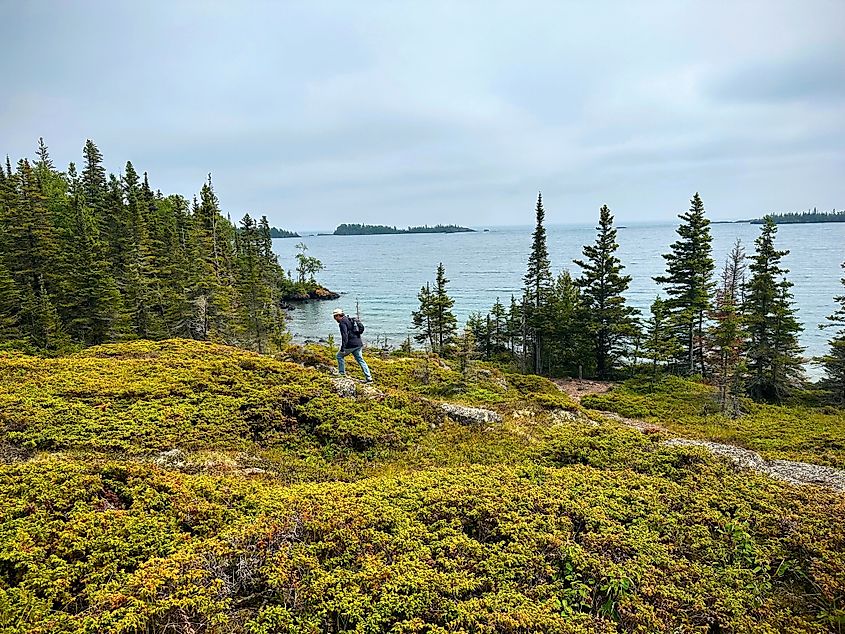
Located in the vast waters of Lake Superior, Isle Royale National Park is a haven for adventurers and solitude-seekers. This remote, roadless wilderness is only accessible by ferry, seaplane, or private boat from Michigan or Minnesota.
Known for its rugged beauty, the island boasts an intricate network of hiking trails, pristine inland lakes, and dense boreal forests. Wildlife abounds, including the famous predator-prey relationship between its isolated populations of gray wolves and moose. These populations have been the subject of one of the longest-running wildlife studies in the world, offering insight into the delicate balance of nature in isolated environments.
Kayaking along Isle Royale’s jagged shoreline offers an up-close look at its stunning geology, while divers can explore the well-preserved shipwrecks beneath Lake Superior’s chilly depths. The frigid, freshwater environment helps to preserve shipwrecks exceptionally well, making Isle Royale one of the best places in the US for freshwater wreck diving.
Visitors to Isle Royale can enjoy multi-day backcountry hikes, with camping sites located throughout the park. The remoteness of the island means that visitor numbers remain low, allowing for a truly immersive wilderness experience. Those looking for a more comfortable stay can book a room at Rock Harbor Lodge, the park’s only lodging facility, which offers stunning views of the lake and surrounding forest.
Tangier Island, Virginia
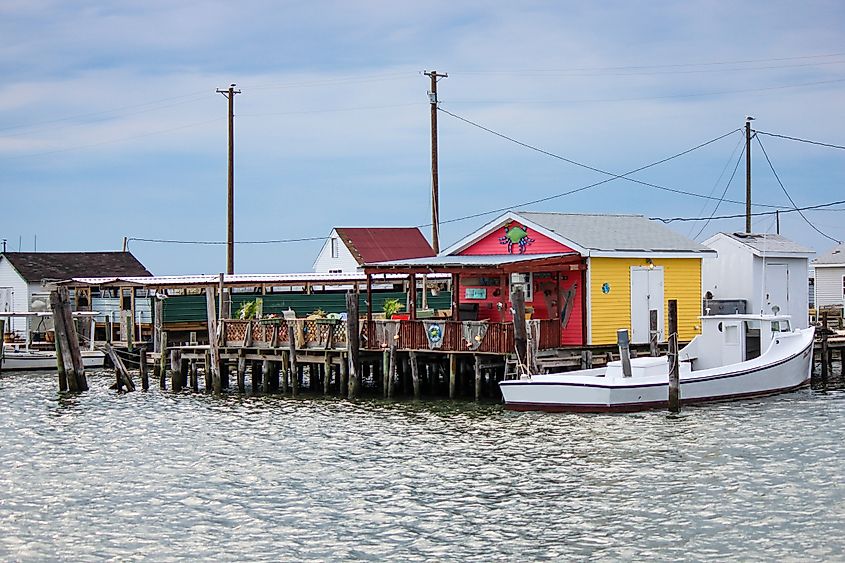
A living time capsule in the middle of Chesapeake Bay, Tangier Island is a place like no other in the United States. Only reachable by ferry or private plane, this island is home to a small, tight-knit community whose residents speak a distinct Elizabethan dialect—a linguistic relic from early British settlers.
Tangier’s culture revolves around the Chesapeake Bay blue crab industry, and visitors can experience life as a waterman by joining a local crabbing expedition. The island’s seafood is renowned for its freshness, and local eateries serve up some of the best soft-shell crab dishes in the country. The town itself is small, with narrow streets navigated primarily by bicycles and golf carts, as there are few cars on the island.
The island is also a place of environmental concern, as rising sea levels threaten its existence. Many scientists predict that without intervention, Tangier Island could be underwater within the next 50 years. This makes a visit here not only a journey into the past but also an opportunity to witness a community grappling with the very real effects of climate change.
For those interested in history, Tangier History Museum & Interpretive Cultural Center provides insights into the island’s unique heritage, from its colonial past to its current struggles. Visitors can also explore the surrounding marshlands by kayak, offering a serene escape into the natural beauty of the Chesapeake Bay.
Catalina Island, California
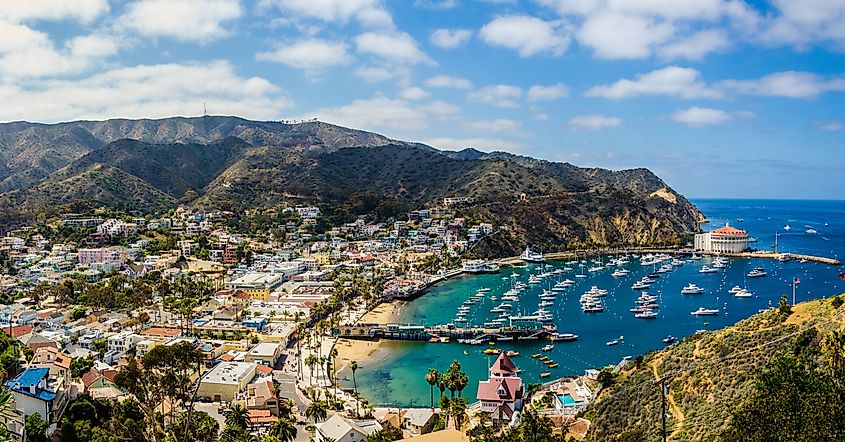
Although just 22 miles off the coast of Southern California, Catalina Island feels worlds away from the hustle of Los Angeles. Ferries from Long Beach, Dana Point, and San Pedro provide access to the island’s main town, Avalon, while those seeking a faster arrival can opt for a helicopter ride or private plane.
Catalina boasts a unique blend of rugged wilderness and resort-style leisure. Hike the Trans-Catalina Trail for stunning ocean views, or dive into the island’s kelp forests, home to Garibaldi fish and sea lions. Thrill-seekers can take a zip line through canyons, while those looking for relaxation can enjoy Avalon’s beachside cafes and charming Mediterranean-inspired architecture.
The island is also home to the Catalina Island Conservancy, which protects nearly 90% of the island’s land. This preservation effort has allowed native plant and animal species, such as the Catalina Island fox, to thrive. Visitors can take Jeep eco-tours to see the island’s interior, where bison—originally brought for a 1920s film production—still roam freely.
Little Diomede, Alaska
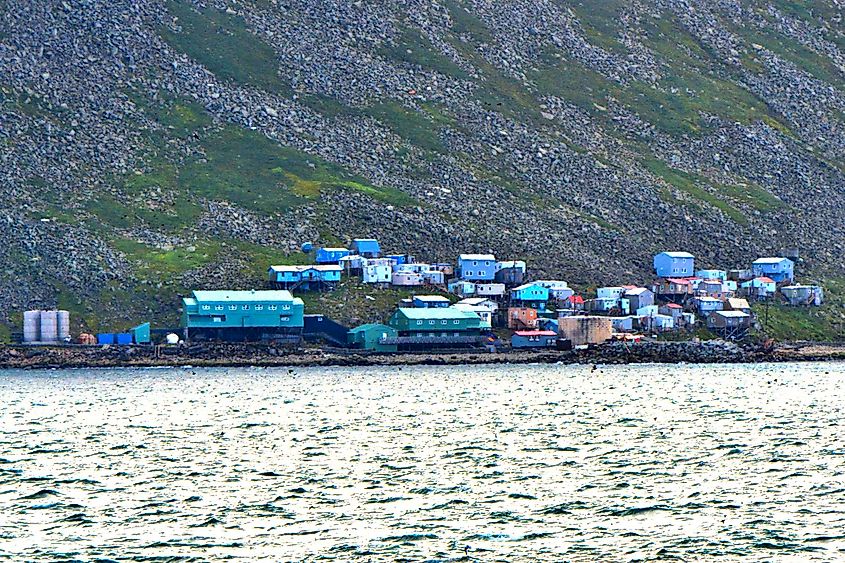
Little Diomede Island (Bering Strait, Alaska, USA; 65°45‘15‘‘N, 168°55‘25‘‘W). Editorial credit: Ansgar Walk via Wikimedia Commons
For travelers craving the ultimate remote adventure, Little Diomede offers an experience few will ever have. Sitting in the Bering Strait, just 2.4 miles from Russia’s Big Diomede, this tiny Alaskan island is home to an Inupiat community that relies on subsistence hunting and fishing.
Little Diomede is only accessible by helicopter or a rare seasonal ice runway, making it one of the most isolated inhabited places in the US. Here, visitors can witness the Inupiat way of life, observe Arctic wildlife, and, if timed right, experience the surreal phenomenon of standing near the International Date Line, where you can literally see ‘tomorrow’ on Russia’s Big Diomede across the water.
Sapelo Island, Georgia
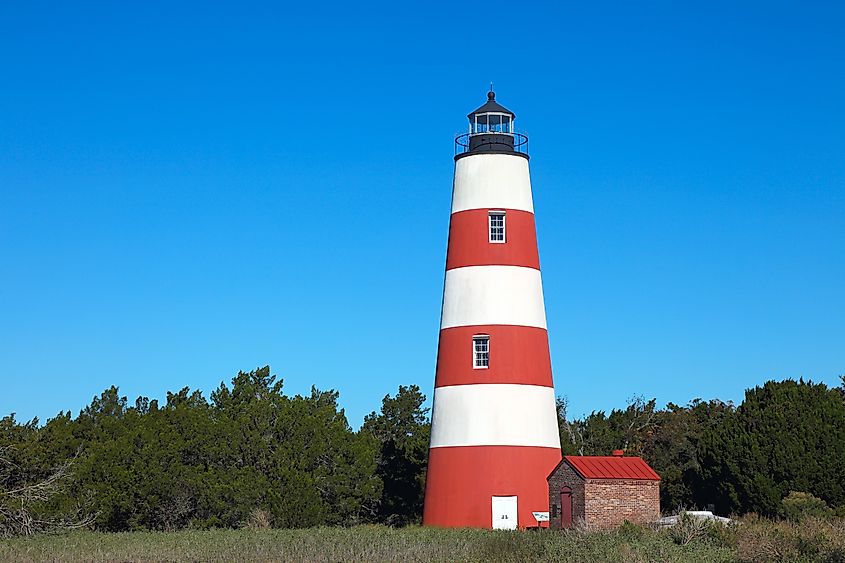
A gem off the coast of Georgia, Sapelo Island is steeped in history and Southern charm. Only accessible by ferry, this barrier island is home to the Gullah-Geechee community, descendants of West African slaves who have preserved their unique culture and traditions for generations.
The island offers a mix of unspoiled beaches, maritime forests, and historic sites like the Ruins of Chocolate Plantation. Visitors can explore Sapelo’s past at the Reynolds Mansion or take guided tours to learn about the island’s Gullah-Geechee heritage.
A Journey to the Unreachable
For those willing to venture beyond the limits of roads, these six islands offer an experience unlike any other. Each destination tells its own story—whether through wild landscapes, cultural preservation, or historic intrigue. Accessible only by boat or plane, these islands remind us that true adventure still exists, waiting for those bold enough to seek it.
